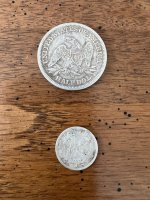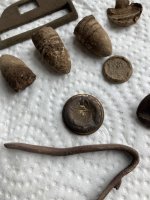jaybreezy58
Jr. Member
I AM NEW TO THE HOBBY AND WOULD LIKE TO KNOW IF ANYONE AROUND MY AREA COULD TAKE THE TIME TO TAKE ME TO SPOTS AND SHOW ME HOW TO LOCATE ITEMS OR GIVE ME SOME LOCATIONS TO TRY? . I REALLY WANT TO LEARN , BUT NOBODY I AM FRIENDS WITH ARE INTO THIS HOBBY SO I AM BASICALLY ALONE ON THIS.
JIM
JIM
Upvote
0





